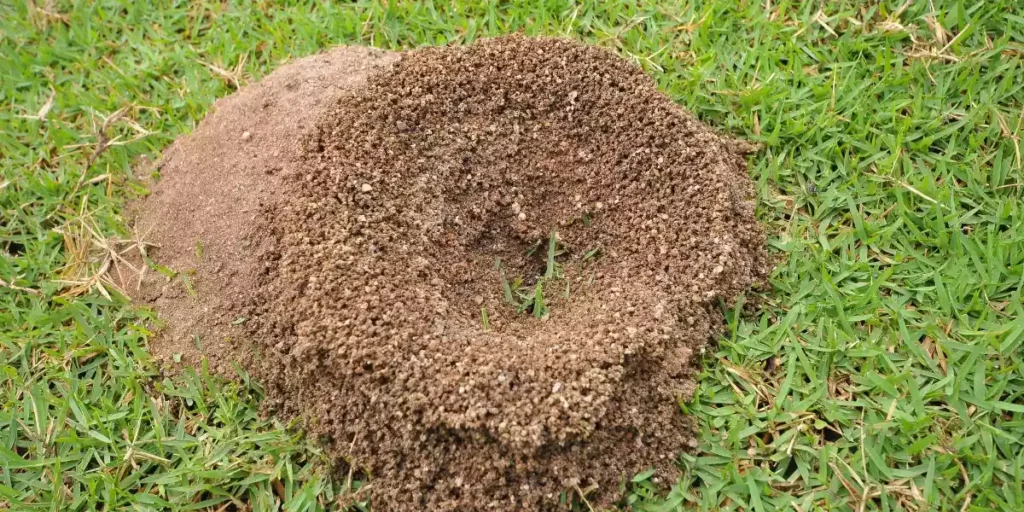A razor back shovel is a specialized gardening tool that is used for many different purposes. It has a long, narrow blade and a short handle, which allows it to be easily maneuvered in tight spaces. The unique shape of the blade makes it ideal for digging deep and narrow trenches or holes.
Additionally, its lightweight design makes it easy to carry around the garden or yard. This article will explore the various uses of a razor back shovel and why it is an essential tool for any Master Gardener.
Furthermore, techniques related to using the razor back shovel correctly will be discussed with an emphasis on safety and efficiency. An understanding of these topics will help any Master Gardener make informed decisions when selecting tools for their gardening projects.
Additionally, this article will discuss how to choose the right shovel for your needs by taking into consideration factors such as weight, blade size, handle length, and material type.
In summary, a razor back shovel is a versatile and essential tool for any Master Gardener, and choosing the right one and using it correctly can greatly improve the efficiency and safety of your gardening projects.
Overview Of A Razor Back Shovel
A razorback shovel is a type of digging tool commonly found in garden centers. It is typically used to dig or turn soil, but can also be used for other types of tasks such as cutting through roots and moving plants.
The razorback shovel has a long handle with a flat-blade head, giving it an overall unique shape that sets it apart from other shovels. Razorback shovels come in various shapes and sizes. The most common have either a round or D-shaped blade head and are available in different lengths.
They are usually made from lightweight metals such as aluminum or carbon steel that provide enough strength to perform various tasks without causing fatigue to the user. Some models also feature ergonomic handles that make them easier to grip while working.
When choosing a razorback shovel, it is important to consider what tasks you will mostly be using it for and if the size and weight of the model fits your needs. It also helps to look for features such as anti-rust coating or comfortable grips that may help make your work easier and more efficient.
Uses Of A Razor Back Shovel
The razor back shovel stands out among its peers as a unique tool with the ability to do many jobs. Its design, featuring a sharp pointed blade and a short, straight handle, gives it an aggressive stance that cuts through dirt and soil like butter. The curved handle is designed for maximum efficiency in order to help you work smarter and not harder.
This multipurpose tool can be used for all types of garden work, from weeding and digging to edging and mulching. It is also ideal for construction jobs, such as breaking up pavement or grading soil. The razor back shovel’s sharp-pointed blade helps reduce fatigue by cutting through the soil quickly and without much effort from the user. The ergonomic design of its handle allows for even pressure when pushing against the ground. Additionally, the shape of the head provides greater support when moving heavy materials such as rocks or bricks.
This versatile tool has many uses in both residential and commercial settings:
- Digging trenches or holes
- Turning over soil
- Moving gravel
- Mixing concrete
- Shoveling snow
- Breaking up pavement
No matter what task you are tackling, the razor back shovel will make your job easier with its efficient design and powerful blade.
Choosing The Right Razor Back Shovel
-
The Razor Back shovel is a type of shovel that is used for a variety of purposes, such as digging, edging, and transplanting.
-
It is typically made of a durable material such as steel or aluminum, and the blade is usually serrated for extra durability.
-
The handle of the shovel is usually a long, straight piece of wood, but other materials such as plastic and fiberglass are also used for a lighter weight shovel.
-
The length of the handle is an important factor to consider when choosing a Razor Back shovel because it affects the user’s comfort and ease of use.
-
The handle length should be based on the user’s height, as well as the type of work that the shovel will be used for.
-
For general purpose gardening tasks, a handle length of 30 to 36 inches is typically recommended.
Types Of Shovels
When it comes to choosing a razor back shovel, it is important to understand the types of shovels that are available.
Shovel designs vary from flat-blade to round-point, and materials used for construction range from carbon steel to stainless steel.
Flat-blade shovels are best suited for digging and scooping up loose material such as soil, gravel, and sand, while round-point shovels provide a sharp tip for penetrating compact soil.
Carbon steel blades are generally less expensive but less corrosion resistant than stainless steel blades. Additionally, carbon steel blades require more frequent maintenance due to rusting properties. Stainless steel blades are more expensive but offer better corrosion resistance and longer life expectancy with minimal maintenance required.
Another factor when choosing a Razor Back Shovel is the handle design.
Handles can be constructed out of wood or fiberglass, each with their own benefits.
Wood handles are often more comfortable than fiberglass due to their natural grip and cushioning ability; however they tend to deteriorate quickly when exposed to moisture or extreme temperatures.
Fiberglass handles are more durable than wood but can become slippery when wet or cold; they also tend to be heavier in weight than wood handles making them better suited for larger jobs requiring increased leverage or power.
In conclusion, selecting the right razor back shovel requires careful consideration of its use case as well as the materials and design features available on the market today.
With the right knowledge and understanding of these factors, you will be able to choose a razor back shovel that meets your needs perfectly.
Materials Used
When it comes to selecting the right razor back shovel, materials used for construction are an important factor to consider. Commonly used materials include hardened steel, carbon steel, and forged iron. Hardened steel is more durable than its counterparts and provides greater resistance against wear and tear over time.
Carbon steel is less expensive but requires more frequent maintenance due to its rusting properties. Forged iron provides a sharp point which can penetrate compact soil making it ideal for certain tasks such as digging or scooping up loose material. In addition to the materials used in the construction of a razor back shovel, design features should also be taken into account when making a selection.
Certain features such as handle design and blade shape can greatly improve the user experience by providing better grip, comfort, or leverage depending on the job at hand. A good handle design can make all the difference when tackling larger jobs that require increased power or leverage. Overall, choosing the right razor back shovel involves careful consideration of multiple factors including materials used for construction and design features available on the market today.
With the right knowledge and understanding of these factors, you will be able to choose a tool that meets your needs perfectly.
Handle Length
The handle length of a razor back shovel is an important factor to consider when selecting the right one. Handles vary in length depending on the type and size of job being performed.
Longer handles provide more leverage while shorter handles offer greater control and maneuverability. For larger jobs, a longer handle can be more ergonomic by allowing for a comfortable grip that reduces strain on the user.
Shorter handles are ideal for tasks such as weeding or transplanting where detailed precision is needed. When choosing a handle length, it is important to take into account the specific task at hand and select an option that will provide optimal comfort and control for the user.
Ergonomic design features like contoured handles or cushioned grips can further enhance the user experience by providing better grip, comfort, and leverage when tackling larger jobs.
Safety Tips For Using A Razor Back Shovel
When using a razor back shovel, it is important to take safety precautions. Wearing gloves and other safety gear can help protect your hands and arms from scrapes and cuts that could occur when digging with the sharp metal edges of the tool.
Additionally, it is important to wear sturdy shoes with good grip to avoid slipping or falling while using the shovel.
Inspecting the handle and blade of a razor back shovel before use can also help to ensure safe operation. Check for any signs of wear or fatigue in the handle, as well as any rust spots on the blade that could indicate corrosion. If any defects are found, replace the item immediately or have it professionally repaired.
For best results, always use two hands when digging with a razor back shovel. This will minimize strain on your body and help ensure accuracy while you work.
Additionally, be sure to dig straight down when possible rather than at an angle—this will reduce stress on your arms and prevent accidental slips that could lead to injury.
Digging With A Razor Back Shovel
The Razor Back shovel is a must-have for any landscaping project. Its unique design allows for efficient digging and planting, making it the ideal tool for any gardening job.
With its curved blade and pointed tip, this shovel ensures that you can dig with ease and precision without having to expend too much effort.
When using a Razor Back shovel, it is important to keep safety in mind. The handle should be firmly gripped at all times to avoid slipping or straining your wrists. If the soil is particularly hard, take extra care when digging and use short chopping motions instead of long strokes. Additionally, make sure to wear protective gloves and eyewear in order to protect your hands and eyes from dirt and debris while gardening.
Master gardeners may find that the Razor Back shovel shines in various landscaping applications due to its versatility. It can be used for planting trees or bushes, as well as digging trenches or holes for drainage systems.
Furthermore, the sharp edge of the shovel makes it ideal for edging gardens or flower beds while providing precise control over depth and width of cuts made in the soil.
Transporting And Storing A Razor Back Shovel
A Razor Back shovel is a multipurpose gardening tool designed to help in a variety of tasks, such as digging, edging, and planting. It has an ergonomic handle design that allows for comfortable use while performing any task.
While it can be used in many situations, it is important to care for the shovel properly to ensure longevity. Properly storing and transporting the Razor Back shovel is essential for maintaining its condition and ensuring safe usage.
For storage, the Razor Back should always be kept clean and dry. When not in use, store it out of direct sunlight and away from excessive heat or moisture. Be sure to keep the shovel away from sharp items or surfaces that may cause damage to the handle or blade edges. Additionally, make sure that any dirt or debris on the shovel is completely removed before storing it away.
When transporting the Razor Back shovel, it is important to secure it properly so that it does not move around or cause potential injury during transit. A good option is to tie down the handle with rope or bungee cords so that it stays firmly in place while being transported in a vehicle or trailer. Doing this will help prevent accidental damage and will also reduce any potential safety hazards associated with having an unsecured shovel in transit.
It is easy to keep your Razor Back shovel functioning at its best with proper storage and transport practices. Taking these simple steps will help maintain its condition and ensure that you have a reliable tool you can use over many seasons of gardening projects without worry or concern for its safety.
Maintenance Tips For A Razor Back Shovel
Like all tools, a razor back shovel needs proper maintenance in order to be effective and last for many years. Properly caring for your razor back shovel is essential for it to remain in top condition, like the saying “A stitch in time saves nine”. With the right cleaning tips and sharpening techniques, this piece of equipment will be ready to tackle any job that comes its way.
Cleaning your razor back shovel should be done after each use. This will help remove dirt and other debris that could potentially dull its edge or damage the handle. It’s important to use a brush or cloth specifically designed for cleaning tools as this will help avoid scratches on either the blade or handle.
To keep rust away, rinse your shovel off with water after each use and dry it thoroughly as soon as possible. You can also apply a thin coat of oil to prevent rust from forming on both the blade and handle.
Sharpening your razor back shovel should also be done regularly – about twice a year – depending on how much work it needs to do. Use a sharpening stone specifically designed for tools; choose one with an appropriate grit size so you don’t over-sharpen the blade’s edge. Start by sharpening along one side of the blade from tip to base, then flip it over and sharpen along the other side until evenly sharpened on both sides. Finally, run a file along both sides of the blade’s cutting edge to ensure its smoothness and clarity.
Taking these steps will ensure your razor back shovel remains in good condition so you can get more years out of it without having to replace it anytime soon!
Conclusion
The truth of the theory that a razor back shovel is a helpful tool for any gardener or landscaper is undeniable.
This shovel is designed to make work easier, faster, and more efficient.
Its unique shape allows it to be used in tight spaces, making it ideal for digging up weeds or planting small shrubs.
By choosing the right size razor back shovel and using it safely, users can benefit from its convenience and strength.
With proper maintenance this tool will serve its purpose for years to come.
Gardeners and landscapers alike can trust the power of a razor back shovel to help them achieve their goals quickly and easily.




